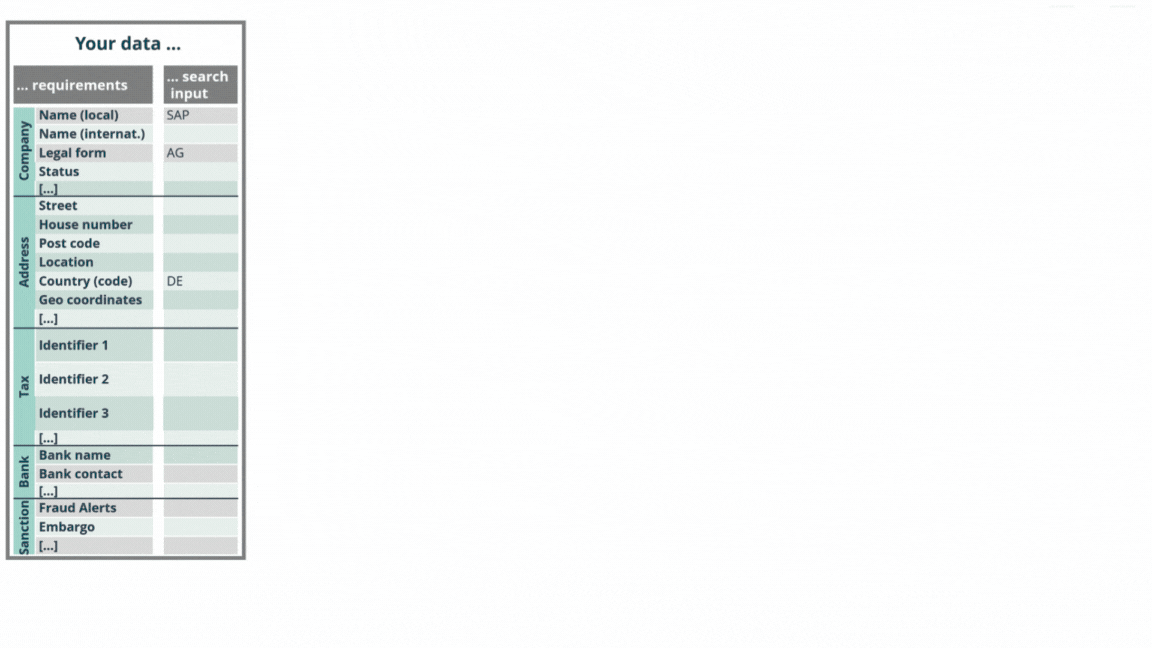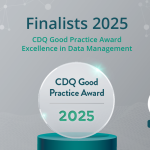Augmenting business partners into trusted Golden Records

Let's explore a fundamental concept that plays a pivotal role in ensuring the integrity and consistency of your business partner information – the golden record. At its core, a golden record is the definitive, trustworthy representation of a particular entity, such as a business partner, within your organization's data ecosystem.
Now, why is this golden record so crucial? Imagine your business partner master data as a vast collection of puzzle pieces scattered across various systems and databases. Each piece represents a snippet of information about a particular business partner, like their contact details, transaction history, or contractual agreements. The challenge arises when these pieces are scattered, duplicated, or outdated, leading to a fragmented and inaccurate picture.
This is where the golden record steps in as the solution to this puzzle. Its significance lies in consolidating and harmonizing all these scattered puzzle pieces into one unified, accurate, and reliable representation of a business partner. By establishing a single source of truth, the golden record becomes the go-to reference for information about a specific business partner.
Why is the Golden Record important?
The golden record acts as a unifying force, ensuring that everyone within the organization is working with the same, accurate information about a business partner.
Consistency
Avoiding discrepancies is crucial. By having a single version of truth, organizations minimize the risk of conflicting or contradictory data. This consistency fosters a unified understanding of business partner information.
Decision-making
Informed decisions are empowered by accurate and consistent data. The golden record facilitates informed decision-making, leading to better business outcomes.
Efficiency
Streamlined processes become possible when employees spend less time reconciling conflicting data and more time focusing on their core responsibilities. This efficiency is a direct result of having a golden record in place.
Trust
Building trust: Stakeholders, both internal and external, can trust the information provided by the organization. This trust is vital for maintaining healthy business relationships and credibility.
Leveraging CDQ for Golden Record Excellence
While the complexity of generating a Golden Record is undeniable, CDQ software solutions play a pivotal role in streamlining and automating this process by applying Artificial Intelligence, Machine Learning, and sophisticated algorithms. With over 70 external data sources and more than 200Mio business partner records in the CDQ Data Pool, the augmented business partner is generated by employing the standard data curation features as configured in the augmented business partner configuration.
This configuration defines how a business partner record is enriched and standardized, and it distinguishes the following categories:
- Data Sources (Selection of data sources that should be searched for relevant information)
- Data Sharing Pool (Defines if the Community Data Pool is to be considered, and if yes for which countries it is to be treated as most reliable data source)
- Feature Scope (Augmented records are generated employing our well-established data curation features. Knowing this the augmented record configuration needs to define which data curation features are activated/deactivated)
Visualize the real-time augmentation process, as it seamlessly transforms scattered data into one unified and accurate representation:

Golden Record for better trusted data
The value of CDQ Golden Record lies in its ability to combine input data and found reference records to serve specific use cases. Golden records are defined based on various Golden Record Rules, external managed business partner data sources, other external managed data sources, and the credibility and trust score of the data sources. Found records are analyzed to serve as a base record for which additional data is enriched, with a defined list of primary, preferred, and unallowed data sources for each country.
Typically, augmented records are created upon data creation or change, (with the golden record provided by the Business Partner Lookup) and for customers with an update monitor (where CDQ (re-)generates the augmented record upon a trigger event and stores it in the processing log). The augmented business partner is preserved so that customers can always retrieve the latest version of the record, and is newly generated if a trigger event has been detected (e.g. a relevant business partner update was observed in an activated data source to which the record is linked to, a user triggered an ad-hoc regeneration, the augmented business partner was not newly generated since 1 year).
The default data curation features that are used are:
- Enrichment and harmonization of identifiers
- Enrichment of the legal form
- Enrichment of any identifiable name
- Enrichment of any identifiable address
- Enrichment of the business partner status
- Enrichment of the business partner categorization
CDQ also offers typical augmentation profiles (standard, business partner harmonization, registration data enrichment, VAT registration data enrichment and natural person screening), the robustness of the CDQ Golden Record is ensured by possibility to employ various features:
Confirm identifiers: Checks if provided identifiers exist in external data sources and belong to the provided business partner.
Detect industrial zone: Detects and moves industrial zone from address fields to the last thoroughfare of type industrial zone. This data is also added to District for the SAP format record. The Zone is detected during the pre-curation process from the administrative area, locality, thoroughfare, and premise.
Enrich VAT registered information: Enriches the name and address of the business partner as it is provided in official data sources.
Enrich address: Enriches address information. Geo-codes, administrative areas, country name and code. Cleanse address using external data sources. Remove thoroughfare value and subthoroughfares when there are more than 3 locality levels.
Enrich administrative area ISO: Enriches administrative area shortname with ISO value using managed administrative areas. Standardizes administrative area into target language
Enrich category: Tags business partners with different category labels standardized by CDQ such as natural person, legal entity, educational institution, authority, hospital, hotel.
Enrich identifiers: Enriches identifiers using ReferenceData lookup. Cross-links with external data sources and authorities, company as well as address identifiers
Enrich and parse legal form: Identifies and enriches the legal form of a company. Looks for legal form in name and sets it in the appropriate field. When HARMONIZE_NAME turned on: Normalizes name local by harmonizing its legal form.
Enrich local address: Enriches local address in curated Business Partner
Enrich registered name: Enriches name of type registered name via lookup using identifiers.
Extract address context: Identifies and enriches address context. Moves name part after legal form to address context.
Extract care of: Extracts care of from name and sets it in address. Moves care of information from name local to careOf. Removes care of information from name international.
Extract doing business as: Extracts doing business as from name local and international and adds to names list. Removes duplicates of DBAs. Trims spaces.
Harmonize identifiers: Normalizes identifiers by applying formatting rules.
Harmonize name: Normalizes name local by harmonizing its legal form.
Normalize address: Capitalize locality, thoroughfare, and premise. Normalize first level of the locality to CDQ standards.
Parse address: Harmonize address data by parsing thoroughfare numbers, etc. Tries to detect the country if data are invalid. Ensure that country shortname and value are set and existent. Extracts Postal Delivery Point value and number from PostCode. Removes or changes local elements in thoroughfare like esquina (Spanish), mieszkania (Polish), etc. Extracts building number from thoroughfare. Identify and extract premise information. Identify special patterns and extract accordingly, such as ensuring that kilometer patterns are identified and extracted. Detects and moves the industrial zone from address fields to a premise of type industrial zone.
Remove contact information: Removes contact information from names.
Beyond these features, the CDQ Golden Record process intricately navigates the landscape of business data, harmonizing disparate pieces into a cohesive and reliable whole. It not only ensures consistency, informed decision-making, efficiency, and trust but also acts as a catalyst for innovation and growth.
By leveraging advanced technologies and meticulous data curation, CDQ paves the way for organizations to unlock the full potential of their business partner information.

Get our e-mail!
Related blogs
Stepping out of silo thinking: Henkel’s data quality story
A refreshing look at how Henkel tackles an immensely complex data landscape: candid disussion with master data experts, Sandra Feisel and Stefanie Kreft.
The e-invoicing reality: the gateway is ready, but is your data?
Over the past decade, the EU has steadily shifted from encouraging electronic invoices to mandating them. And while the technology obviously plays an important…
How Henkel is turning master data quality into a service
Every now and then, you come across a project that makes you stop and think: “Now that’s how it should be done!” That’s exactly the case with Henkel and their…






